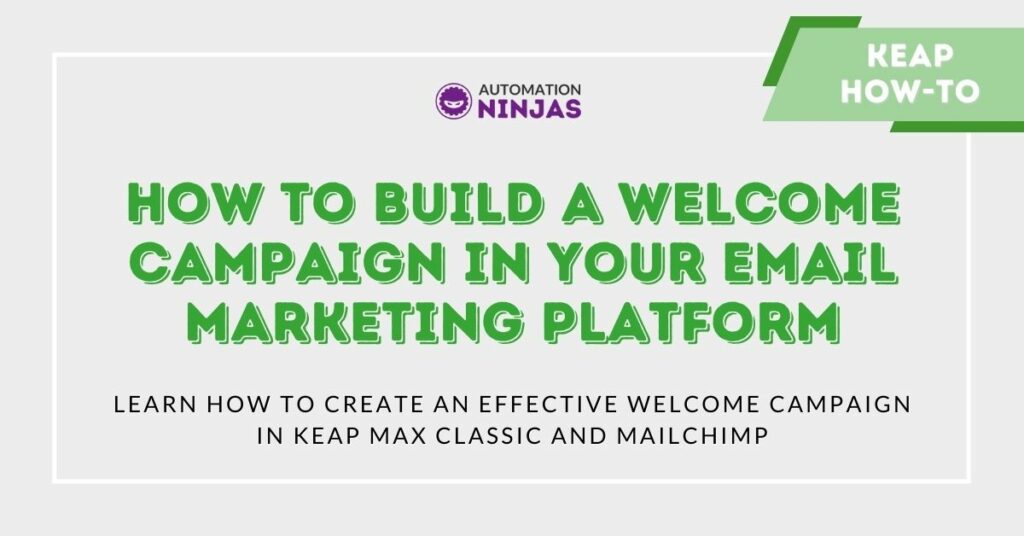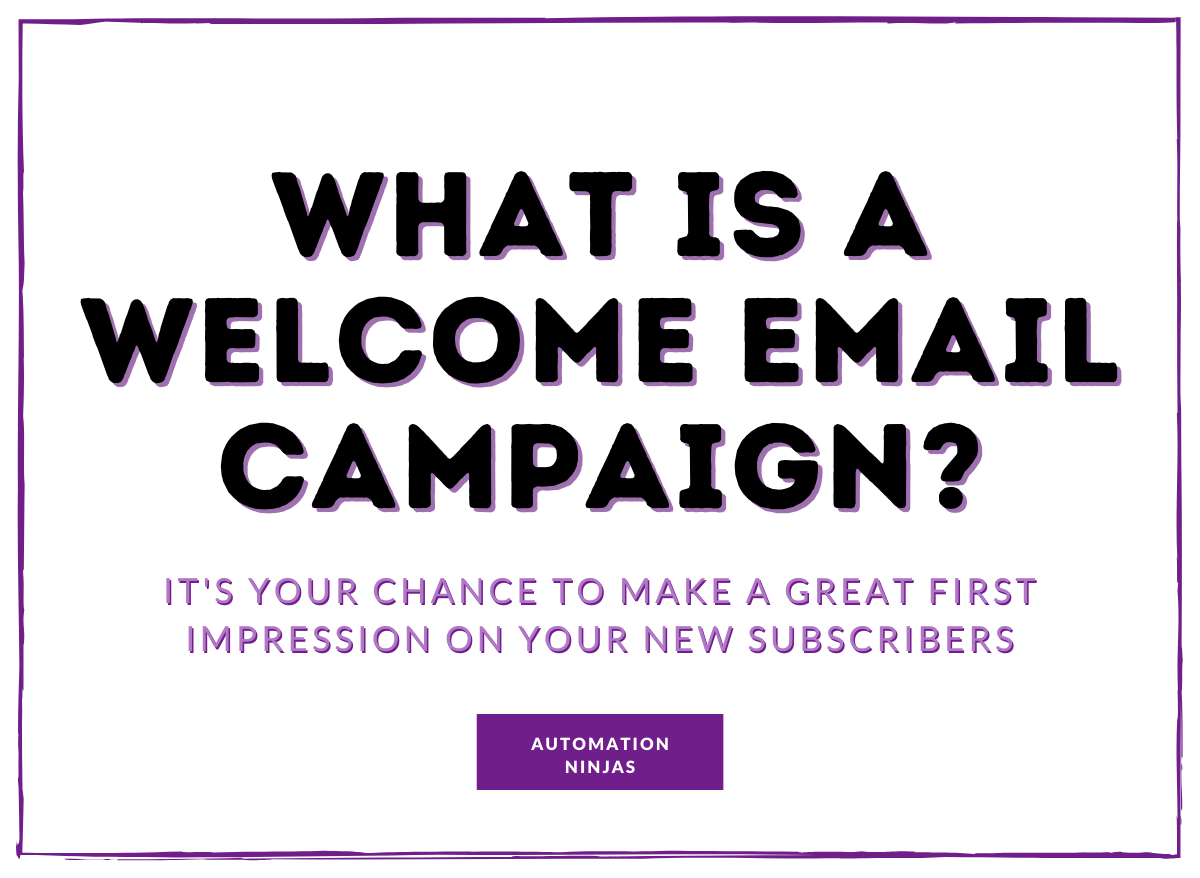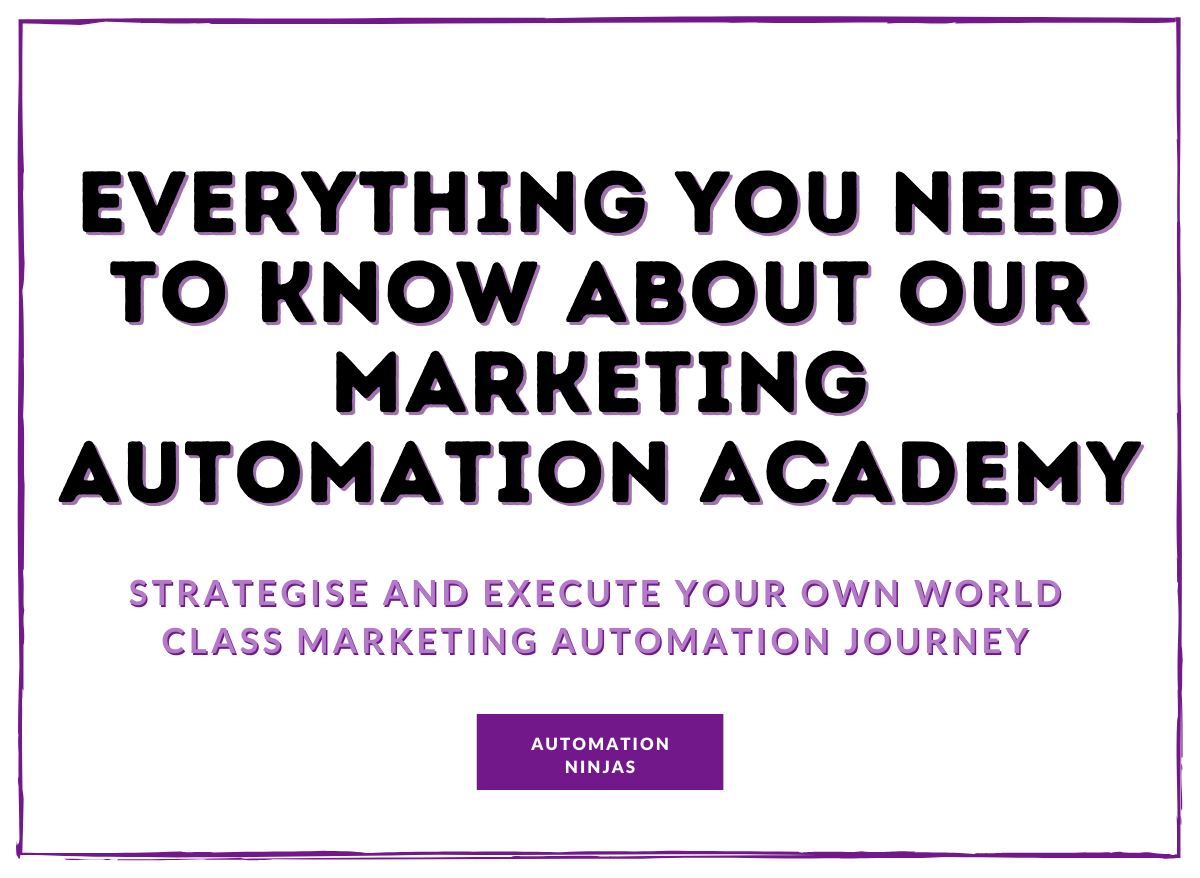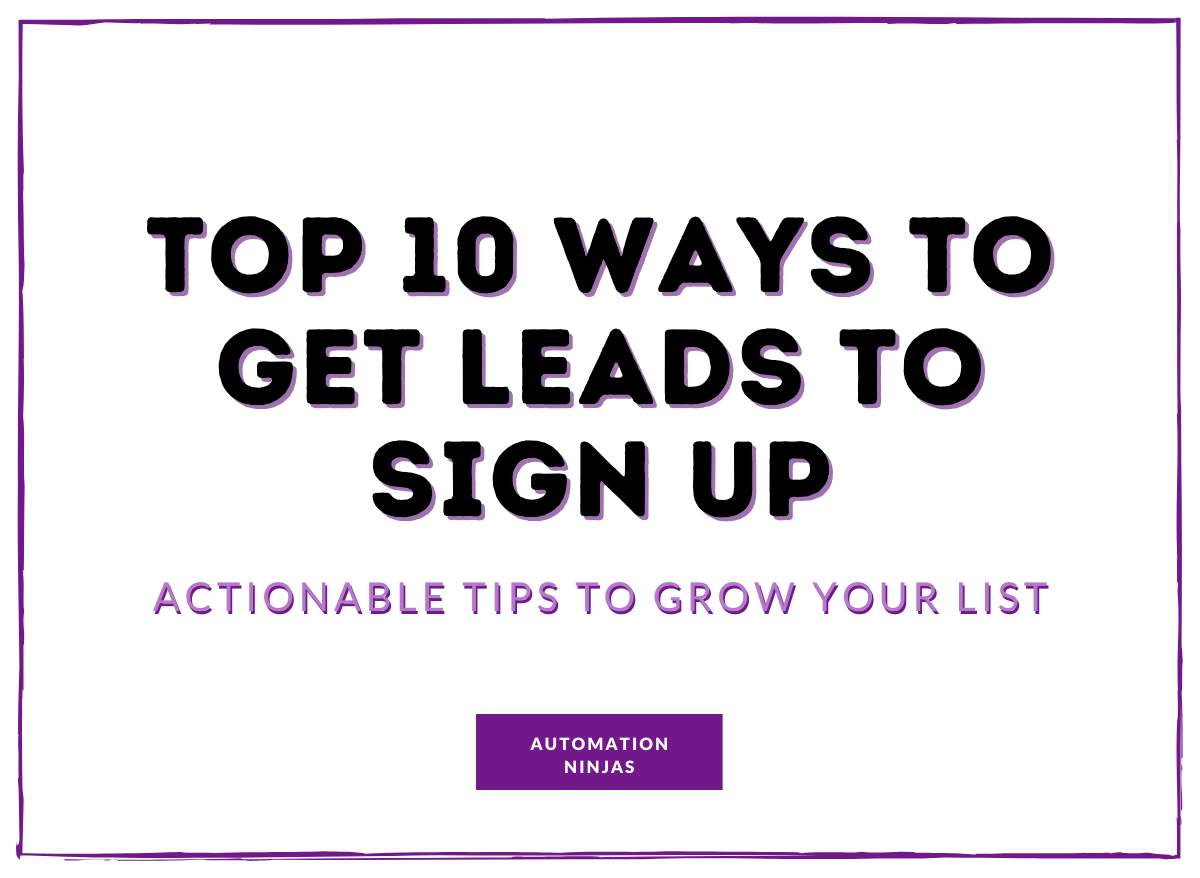You’re putting a lot of work into getting contacts into your email list. You have luscious lead magnets, beautiful blogs and a nifty newsletter. But just because you’ve got their email address, doesn’t mean you’ve planted your name firmly in their mind. You need a good welcome campaign for that.
What is a welcome campaign?
A welcome campaign does what it says on the tin.
It is a series of emails to welcome new contacts to your email list. Over the course of these emails, you will let them know who you are, what awesome things they can expect from you and ultimately why they should trust you over your competitors.
You’ll solidify their trust in you and make sure they are on the edge of their seat waiting to hear more.

Note that this is NOT a sales campaign. I repeat: not a sales campaign.
This means no selling. Yes, you can allude to the services you offer and your experience, because that will help emphasise your expertise. But this is not the place to push sales.
Rather than a bold sales pitch, your welcome emails are there to let contacts know who you are and why they’ll never regret signing up to your mailing list.
Read our blog to learn more about what a welcome campaign is and isn't, and what makes it good or bad...
First things first - know your outline
No matter what marketing automation platform you are using, get your “flow” sorted. Yes, flow. Like a river, your welcome campaign should have a direction that contacts can seamlessly glide thorough.
This begins with an initial welcome email. Keep it brief, clear and to the point. Introduce yourself, thank them for signing up to your list and let them know what they can expect from your next few emails.
After the welcome email, we delve a little deeper into who you are and your expertise. These next couple of emails are where you want you to give your subscriber a bigger taste of why you’re better than your competitors. Let them know who you are, exactly why they’ve made the right choice picking you.
Draw out your email flow in a document that’s easy to understand. We love to use LucidChart like in the example below, but you could go for good old fashioned pen and paper too. Either way, it should look a little like this:

Imagine eating the world's most delicious burger. If you inhale it down in one go, you don’t fully appreciate the flavour.
It’s the same with your welcome emails.
Don’t send your new subscribers one, big, text-laden email with all the good stuff. It’s overwhelming and they’ll soon forget what you’ve said.
Drip feed them a sincere thanks, information about who you are and the nitty-gritty of why you’re awesome bit by bit and they’ll appreciate your deliciousness all the more for it.

When thinking about what to include, you need to think about both the content of the emails and the technical aspects, too.
I could explain this by extending the burger analogy further and talk about all the juicy extras that encompass a delightful eating experience... but maybe I’m just hungry. Instead, I’ll just be straight with you.
You need to be clear on:
- Where your contacts are coming from
- How many emails you are sending
- The timing of these emails
- The order of these emails
Once you have drafted up your initial welcome email and your following ‘who’ and ‘why’ emails, and you’ve decided upon the technical details, it’s time to get building.
This is the techy part where a lot of people freeze. I promise you that building a welcome campaign in your email marketing platform is not nearly as scary as it seems.
Let’s go through it step by step for a couple of the most common marketing automation software: Keap Max Classic (formerly Infusionsoft) and MailChimp.
Building a welcome campaign in Keap Max Classic (fka Infusionsoft)
As Keap Partners, we use Keap Max Classic for all of our campaigns. It’s an in-depth marketing automation software that uses a flow-structure so you can easily see exactly what emails are being sent and when.
As a best practice, your welcome campaign should start with a tag, referred to as a trigger tag when it is being used to “trigger” a campaign. Using tags allows you to know from looking at a contact record whether that contact is part of your welcome campaign or not.
You can also configure your sign-up points (such as a form on your website) to automatically tag contacts with the trigger tag. Tags allow for more flexibility as to where your contacts are collected from, too.
For example, offline contacts (such as sign-ups from an in-person expo or event) can be tagged when you submit their details to the system.
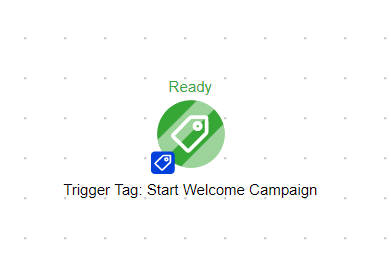
Now we get onto the emails. When a contact is assigned the Trigger Tag, we want them to start getting their welcome emails. In Keap Max Classic, all emails are built within a Sequence. In this example, we have included all the welcome emails in one sequence.
Drag the Sequence option from the tool section to the correct placement within the campaign and name it appropriately, such as “Sequence 1: Welcome Emails”.
Make sure to link the trigger tag and the sequence together. Remember the river analogy? You want the arrows to “flow” through the campaign. You will now have the basis of your campaign structure, and it should look like this:
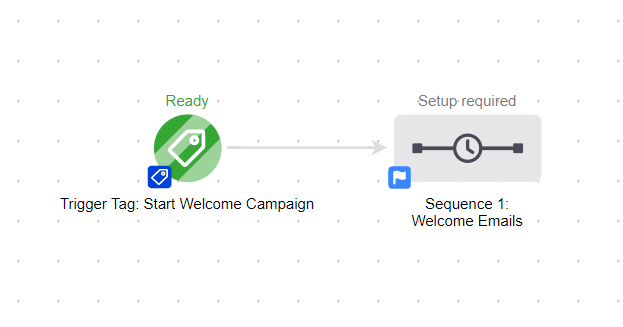
This is the point where you get to add in all that engaging email copy you’ve written.
Open the email sequence and drag the Email tool next to the Start button. Link these up using the arrows, just as you did before.
Make sure your email is formatted correctly, links and images are added and ensure you send a test email to yourself too.
PS. You should be using UTM Links in your emails if you're not already... Learn more in What are UTMs and why should you add them to your email links?
Once you are happy, mark it as “Ready” in the upper right-hand corner. You can now mark the sequence as “Ready” in the same way, too.
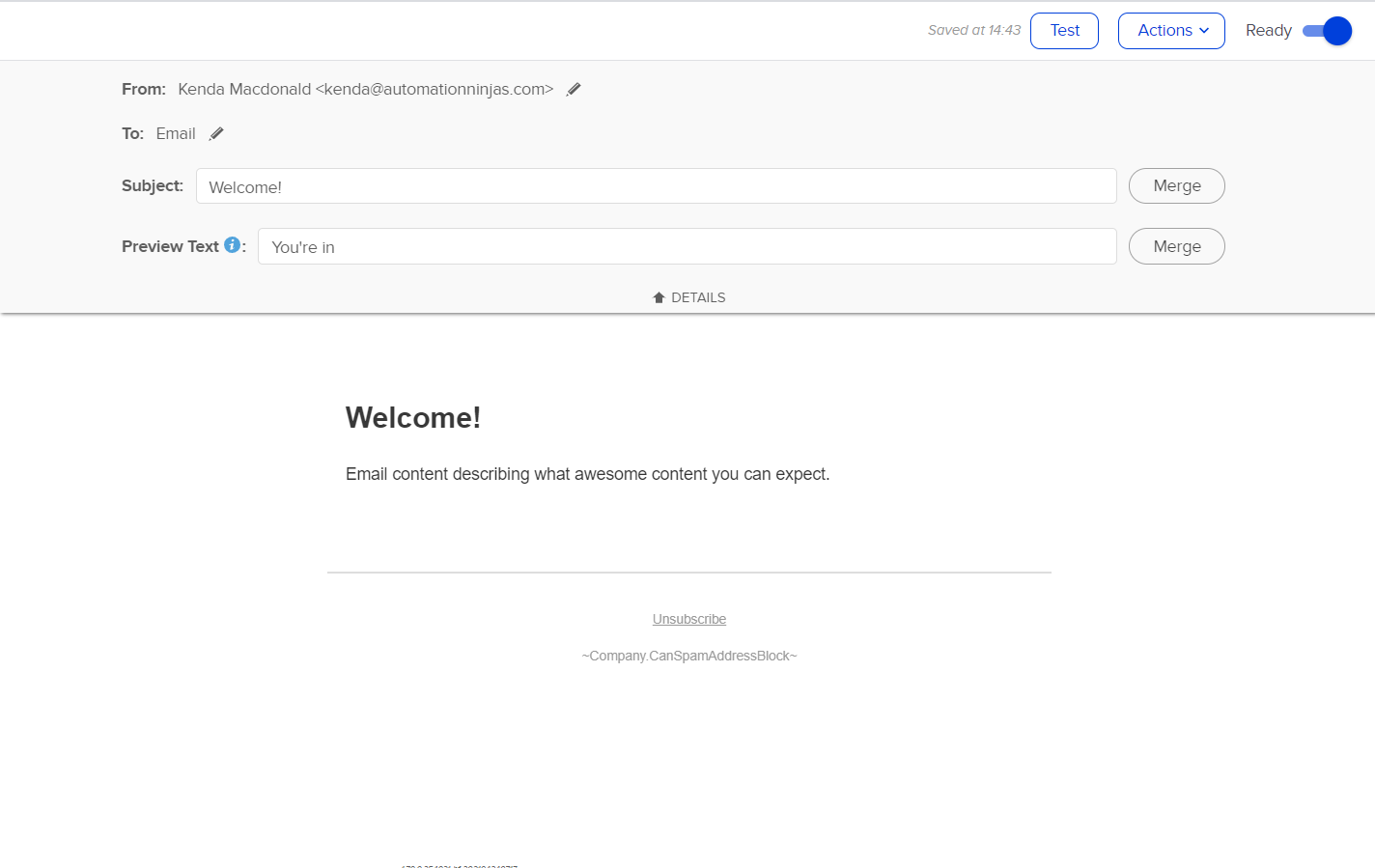
Now unless you plan on bombarding your contacts with several emails immediately after each other (please don't do this), you will need to set up timers. Before adding your next email, drag the Delay Timer tool into the campaign.
Note: You will see a few options for timers, but in this case, we want to use a delay timer. This means the emails are not bound by specific calendar dates, so anyone can enter the campaign at any time and still receive all your wonderful emails.
Choose the time you want to wait between the first and second email. In the example below, we have chosen to wait 3 days. Once you have set the timer, you can then add in your second email in the same way as above.
Repeat the timer and email processes for your third email (and any subsequent emails, if applicable).
Again, remember to connect everything up and mark the sequence as “Ready” in the upper right-hand corner. Your finalised sequence should look like this:

Top tip: If you decide at a later stage to add additional emails, always use a new Sequence. This is best practice to ensure existing contacts in the campaign are unaffected.
At the end of the campaign flow, it is optional but advisable to remove the trigger tag. As you use tags more frequently for different campaigns, contact records can become cluttered with previous tags used to trigger campaigns.
Create a final sequence and, within that, use the Apply/Remove tag tool to remove the trigger tag. Once complete, your final campaign should look like this:
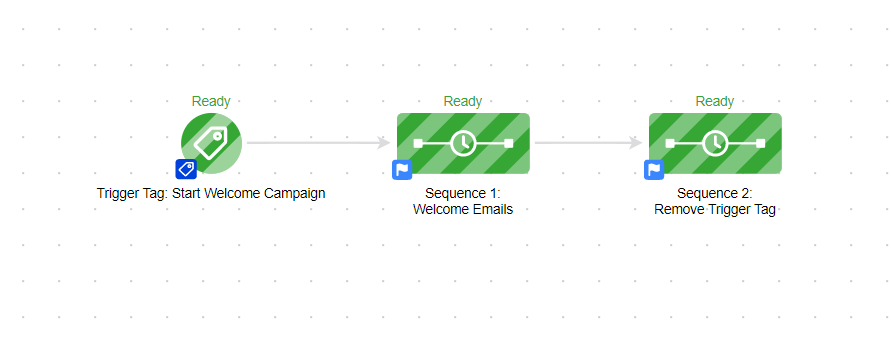
Building a welcome campaign in MailChimp
MailChimp is one of the most popular email marketing platforms used. It uses a flow structure, similar to that of Keap Max Classic, but with a top-to-bottom approach, rather than Keap’s left-to-right.
Within MailChimp, you build your campaign using the Automations option in the sidebar. Rather than the drag and drop style of Keap Max Classic, MailChimp first asks how you want your campaign to start.
The main options to consider for a welcome campaign are tags or signup forms. This will depend on your own setup, but as before, we highly recommend using tags as this gives a little more flexibility when adding contacts to the campaign.
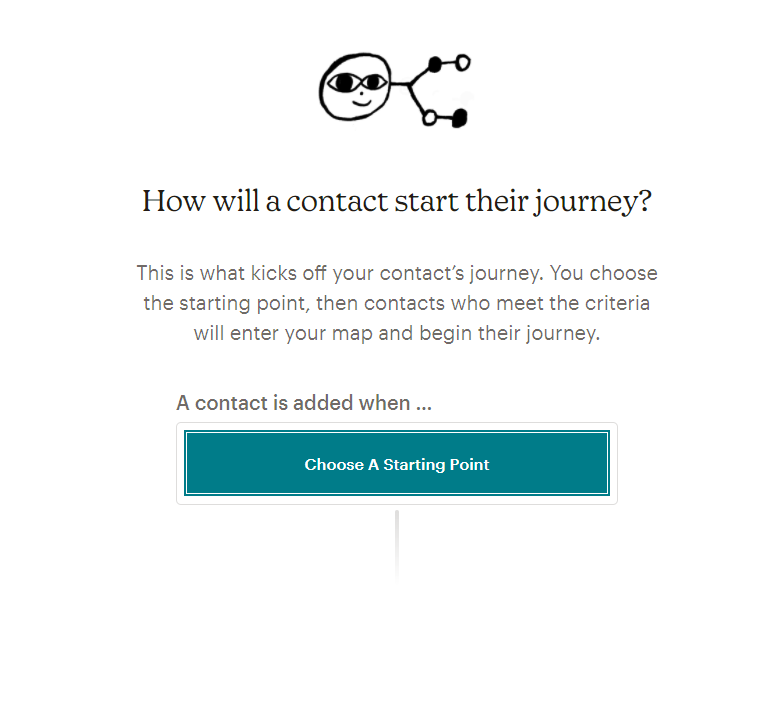
Once you’ve chosen your entry point, the campaign will look like this:
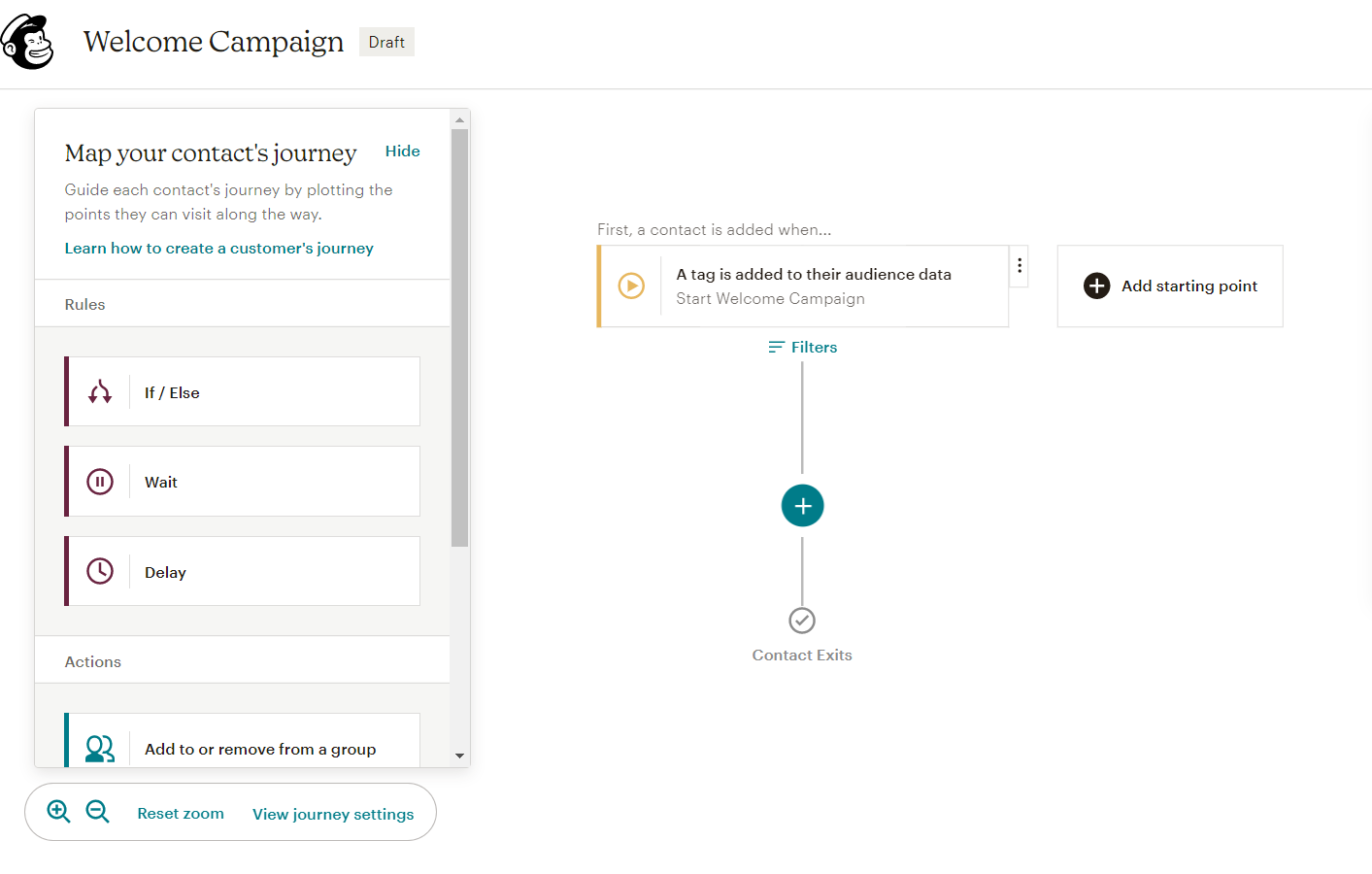
Now you can see the “flow” of your campaign and can start building its structure.
Use the “+” buttons to add in timers and emails as needed. Your first email - the Welcome email - will be sent immediately, so add that first. In the sidebar, select “Send email”.
This is when you can add in the beautiful, engaging copy you poured your heart into writing.
Ensure the email is coming from the correct email address, that your links are accurately included and your formatting is exactly as you want it.
PS. You should be using UTM Links in your emails if you're not already... Learn more in What are UTMs and why should you add them to your email links?
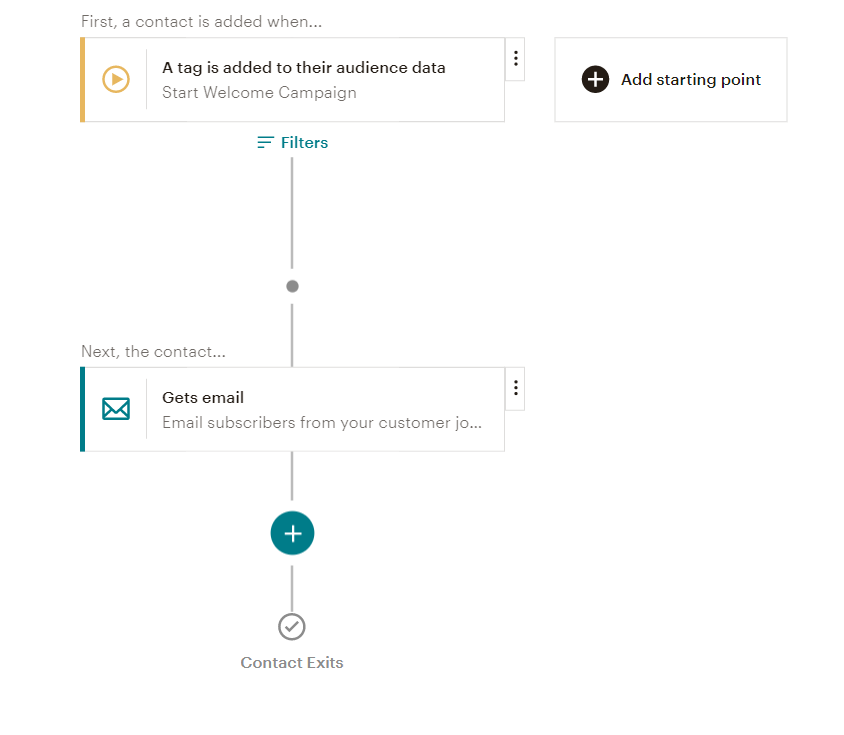
As contacts flow through the campaign, we need to add timers before the second and third emails are sent.
Using a delay timer will keep your welcome campaign evergreen, allowing contacts to enter at any time and still receive all your emails. This can be added from the sidebar, in the same way as the email.
Continue to repeat the above steps to add in the remaining emails, and make sure to remove the trigger tag at the very end. The final section of your welcome campaign should look similar to this:
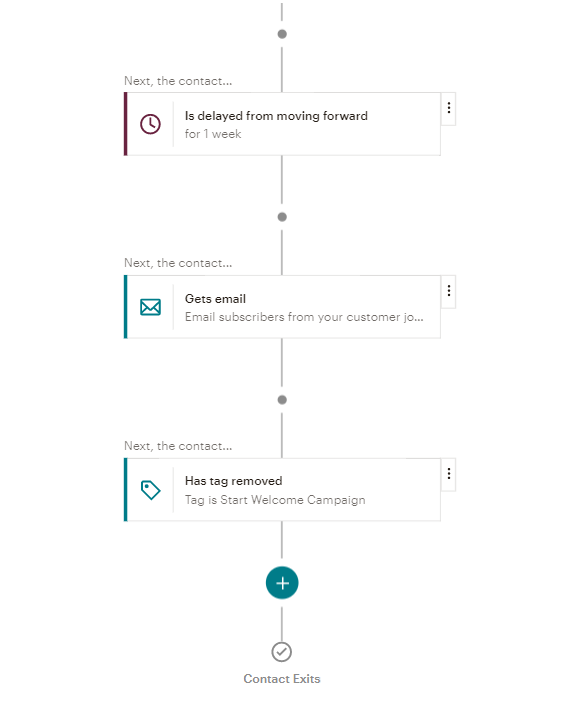
Top tips when building your welcome campaign
No matter what email marketing platform you are using, there are some general tips that will help you monitor and make the most of your shiny new welcome campaign.
- Use analytics. Stats are your friend. Look at your open and click rates to check that contacts are engaging with your welcome emails. This will give you an insight as to how well the welcome campaign is performing, and if there are any changes you should be making.
- Always remember: nurture not sell.
- Keep it evergreen. Avoid mentioning timely items in your email copy, unless you have the capacity and organisation levels to continually change the emails. Ideally, you want to be able to leave your welcome campaign to do-its-thing while you’re busy bossing it elsewhere.
For more examples of what problems you could encounter with your welcome campaign copy - so that you can avoid them, read our blog.
You’re ready to build your welcome campaign!
Welcome campaigns are like a warm up act at a gig. You’ve bought the ticket, but you’re not quite in the zone yet. You’re hoping it’ll be as good as it looked, but you’re unsure.
As the warm up act comes on stage the crowd picks up spirit. You realise you know a few more songs than you thought you did. By the end of the opening act, you know you’ve made the right decision and can tell you’re in for an awesome experience.
It’s the same situation with your welcome campaign emails. Someone has signed up for your list, trusting and hoping they’ll get all the quality and expertise promised. Your welcome campaign is your first opportunity to show them they made the right choice.
These tips for building a welcome campaign are similar for all marketing automation platforms. So get your plan together, write that compelling content and build yourself an awesome welcome campaign that’ll rock their socks off.
Want a little more help building your welcome campaign or creating the welcome email content?

